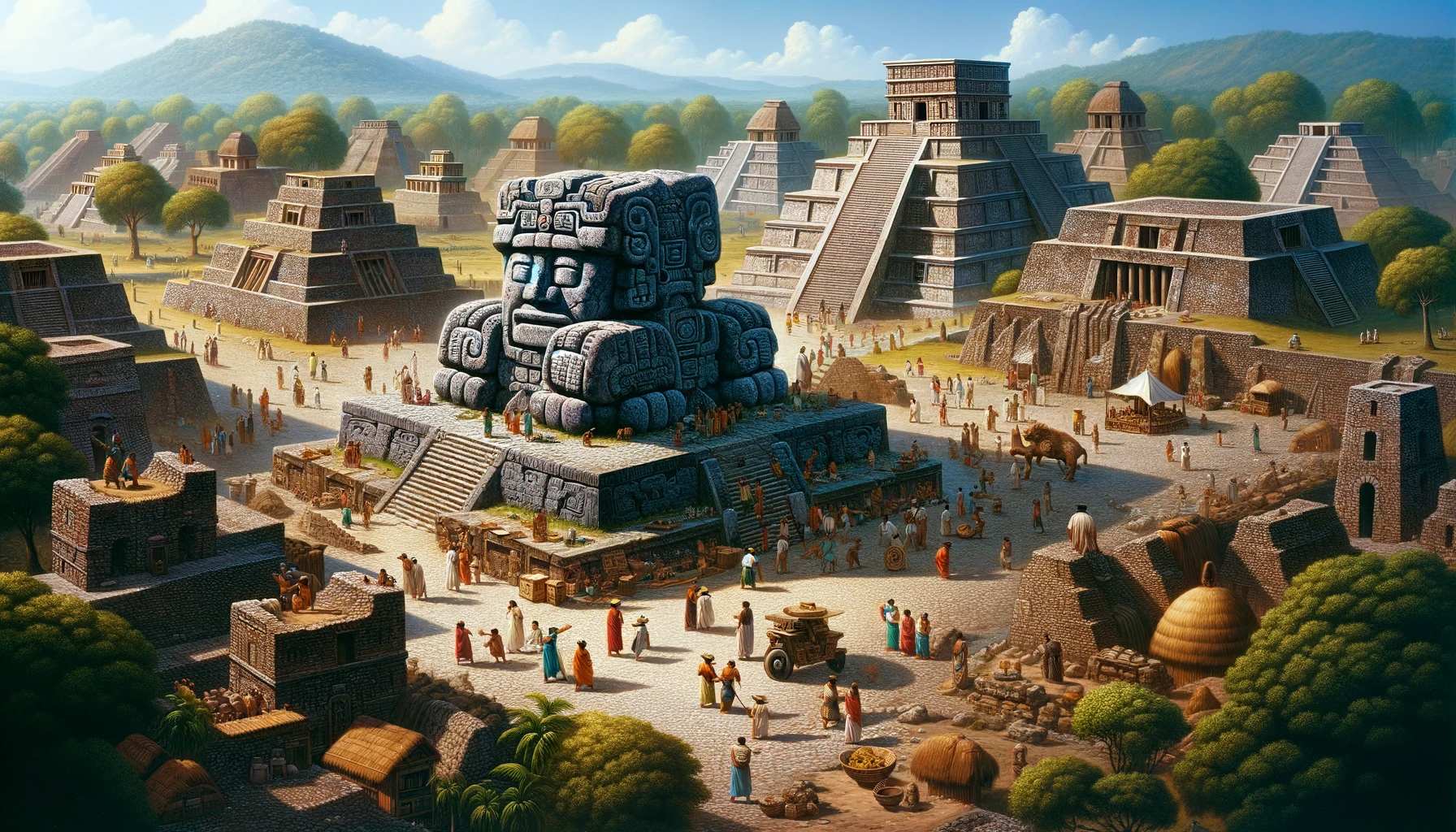
Nestled in the heart of ancient Mexico, the Aztec city of Coatlinchan holds a significant place in Mesoamerican history. This city, lesser-known compared to the grandeur of Tenochtitlan, has garnered attention for its remarkable contribution to Aztec culture, most notably for housing the massive stone sculpture known as the Stone of Tlaloc.
The City of Coatlinchan
Coatlinchan, which translates to "the place of the snake," was an essential part of the Aztec civilization. The city was strategically located, offering easy access to natural resources, which played a crucial role in its development. Its inhabitants were known for their expertise in various crafts, agriculture, and trade, which contributed to the city's economic and cultural prosperity.
Architectural Marvels
The city's architecture reflected the typical Aztec style, with pyramids, temples, and plazas. These structures were not just places of worship and governance but also represented the city's artistic and engineering prowess. The intricate carvings and designs found on these structures provided insights into the religious beliefs and daily life of the Aztecs.
The Stone of Tlaloc
The most significant artifact unearthed from Coatlinchan is the Stone of Tlaloc. This colossal monolith, dedicated to the Aztec rain god Tlaloc, stands as a testament to the artistic and religious fervor of the Aztecs.
Description and Significance
The Stone of Tlaloc, carved from basalt, measures an impressive size and weight. Its detailed carvings depict Tlaloc with his recognizable goggle-eyed face and fanged mouth, symbolizing his power over rain and water. This sculpture was not just a religious icon but also played a vital role in rituals and ceremonies, particularly those praying for rain and good harvests.
Historical Journey
The Stone of Tlaloc's journey through history is as fascinating as its creation. In the 20th century, it was relocated to the National Museum of Anthropology in Mexico City, a decision that sparked considerable debate about the preservation of cultural heritage versus the accessibility of historical artifacts to the broader public.
The Legacy of Coatlinchan
The legacy of Coatlinchan and its Stone of Tlaloc extends far beyond their historical and cultural significance. They offer a window into the complex religious beliefs and artistic achievements of the Aztec civilization. Researchers and historians continue to study these artifacts, providing invaluable insights into the intricate world of the Aztecs.
Cultural Impact
The impact of Coatlinchan and the Stone of Tlaloc on modern Mexican culture is profound. They are symbols of national pride and reminders of the rich pre-Columbian history of the region. Their influence is evident in contemporary art, literature, and cultural ceremonies, where they continue to inspire awe and reverence.
Conclusion
Coatlinchan and its Stone of Tlaloc stand as enduring symbols of the Aztec civilization's rich legacy. These historical treasures not only highlight the Aztecs' artistic and religious achievements but also remind us of the intricate tapestry of human history. As we continue to unearth and study such artifacts, we gain a deeper understanding of the civilizations that shaped our world.
The City of Coatlinchan
Coatlinchan, which translates to "the place of the snake," was an essential part of the Aztec civilization. The city was strategically located, offering easy access to natural resources, which played a crucial role in its development. Its inhabitants were known for their expertise in various crafts, agriculture, and trade, which contributed to the city's economic and cultural prosperity.
Architectural Marvels
The city's architecture reflected the typical Aztec style, with pyramids, temples, and plazas. These structures were not just places of worship and governance but also represented the city's artistic and engineering prowess. The intricate carvings and designs found on these structures provided insights into the religious beliefs and daily life of the Aztecs.
The Stone of Tlaloc
The most significant artifact unearthed from Coatlinchan is the Stone of Tlaloc. This colossal monolith, dedicated to the Aztec rain god Tlaloc, stands as a testament to the artistic and religious fervor of the Aztecs.
Description and Significance
The Stone of Tlaloc, carved from basalt, measures an impressive size and weight. Its detailed carvings depict Tlaloc with his recognizable goggle-eyed face and fanged mouth, symbolizing his power over rain and water. This sculpture was not just a religious icon but also played a vital role in rituals and ceremonies, particularly those praying for rain and good harvests.
Historical Journey
The Stone of Tlaloc's journey through history is as fascinating as its creation. In the 20th century, it was relocated to the National Museum of Anthropology in Mexico City, a decision that sparked considerable debate about the preservation of cultural heritage versus the accessibility of historical artifacts to the broader public.
The Legacy of Coatlinchan
The legacy of Coatlinchan and its Stone of Tlaloc extends far beyond their historical and cultural significance. They offer a window into the complex religious beliefs and artistic achievements of the Aztec civilization. Researchers and historians continue to study these artifacts, providing invaluable insights into the intricate world of the Aztecs.
Cultural Impact
The impact of Coatlinchan and the Stone of Tlaloc on modern Mexican culture is profound. They are symbols of national pride and reminders of the rich pre-Columbian history of the region. Their influence is evident in contemporary art, literature, and cultural ceremonies, where they continue to inspire awe and reverence.
Conclusion
Coatlinchan and its Stone of Tlaloc stand as enduring symbols of the Aztec civilization's rich legacy. These historical treasures not only highlight the Aztecs' artistic and religious achievements but also remind us of the intricate tapestry of human history. As we continue to unearth and study such artifacts, we gain a deeper understanding of the civilizations that shaped our world.